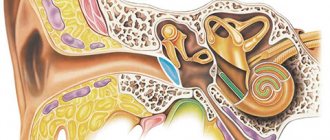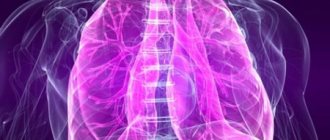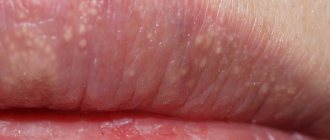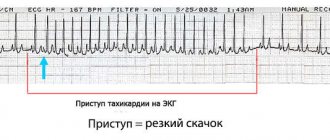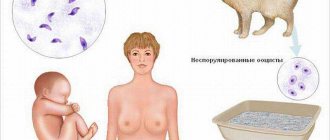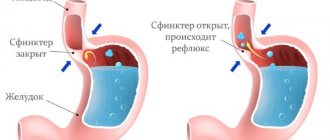Shortness of breath is a feeling of lack of air, due to which there is a need to increase breathing. This is one of the most common complaints patients have when visiting a general practitioner or therapist.
It is a common symptom of diseases of various organs and systems of the human body - respiratory, cardiovascular, endocrine, nervous.
Shortness of breath is accompanied by:
- infectious diseases
- various types of intoxication
- neuromuscular inflammatory processes
- but it can also occur in completely healthy overweight people with detraining of the body - sedentary lifestyle, obesity
- in persons with a labile nervous system as a psycho-emotional reaction to stress
- for metabolic disorders, blood diseases, oncology
This symptom can be both pathological compensatory and physiological in nature, and its severity often does not correspond to the degree of pathological disorders in the body. Multifactoriality and low specificity in many cases make it difficult to use for diagnosis or assessment of the severity of a particular disease. However, a detailed and multi-stage examination of the patient to determine the cause of shortness of breath is mandatory.
Etiology of the disease
At a young age, suffocation can occur during severe overload, for example, when running or doing heavy work. It also occurs as a result of oxygen starvation when conquering mountain peaks. Then nothing bad happens, since if certain safety rules are followed, the condition quickly returns to normal. It's a different matter with old people. Their body is not able to normalize the gas composition of the blood and the disease occurs as a result of diseases of the heart, blood vessels and nervous system. Only a doctor can help identify the causes of shortness of breath in old age and select an individual treatment regimen.
Select a service for your relative | |||
| Caring for bedridden people | Disability care | Elderly care | Care after a heart attack |
Pathology occurs due to the following factors:
- Decreased hemoglobin levels. Anemia does not go away on its own. A course of therapy with iron-containing medications is prescribed.
- The appearance of panic attacks. Negative emotions themselves, such as fear, anger, rage, and anxiety cannot cause suffocation, unless they only pass on a permanent basis. Otherwise, you should consult a psychiatrist.
- Strong physical activity. If a person is used to leading a measured lifestyle, and then suddenly decides to make every effort, for example, to dig up a garden, then a problem may arise as a result of such an action. All treatment consists of rest.
- Overweight. If you are obese, it is not only difficult to climb stairs, but also to simply walk. The deficiency will disappear immediately after losing weight. But you can’t overdo it, as quickly losing extra pounds will lead to negative consequences.
- Lung problems. In this case, it is not recommended to take any medications on your own. Consultation with a pulmonologist is necessary.
- A dangerous disease like cardiac asthma can lead to an attack that will last several hours. You can't do without an ambulance here.
- Coronary artery disease leads to severe pain in the heart, angina pectoris and shortness of breath in an elderly person. Such symptoms appear due to insufficient blood flow into the myocardium through the coronary vessels. If you do not go to a medical facility, a citizen risks a heart attack, which can lead to death.
- Blockage (thrombophlebitis) of the pulmonary artery. It is necessary to save lives urgently, as seconds count! At this time, cyanosis of the face and cramps in the calf muscles appear.
Should I worry if unpleasant symptoms occur?
In most cases, such symptoms are not life-threatening and go away quickly without additional medical intervention. The most common and relatively safe deviation is a condition where the ventricle contracts prematurely. This causes a slight delay in the next beat, which is felt as a “freezing heart”.
“Frozen heart” is not a figure of speech, but the body’s reaction to specific stimuli
Typically, shortness of breath combined with cardiac arrest occurs after:
- drinking alcohol;
- experienced stressful situation;
- performing heavy physical exercise;
- taking a high dose of caffeine.
This reaction of the body to the above factors is considered normal and does not require any drug treatment. It is enough to give up heavy loads and spend at least a day in complete solitude and tranquility.
What you should pay attention to
The most life-threatening diseases are those associated with heart failure. How can you tell if a lack of oxygen is due to heart problems? You need to know what is happening to the person at this time:
- has difficulty inhaling;
- inhalation occurs and intensifies with any type of load;
- shortness of breath appears in a horizontal position. While sitting, breathing becomes normal.
These symptoms indicate that pulmonary edema can occur at any time: lips turn blue, weakness appears and panic occurs. In this condition, you need to call an ambulance!
Leave a request for selection of a boarding house
for an elderly person with shortness of breath
Leave a request for selection of a boarding house
for an elderly person with shortness of breath
Useful tips
To eliminate the symptom, taking medications is not enough. You should intensify your life, react correctly to stress, follow a diet and physical activity. The patient is recommended:
- To refuse from bad habits.
- Frequent walks, preferably in a park or forest.
- Avoid activities that cause shortness of breath.
- Clothing should not restrict movement.
- Medicines should be kept in a visible place (no one is guaranteed against unrest).
- The head of the bed should be raised 40 degrees.
- Eating in small portions.
- A low-calorie diet with limited sodium content is required.
- Daily blood pressure monitoring.
What not to do:
- Take medications that retain fluid.
- Change dosages.
- Ignore the assigned daily routine.
- Sleep less than 8 hours.
- Stay in a stuffy room for a long time.
Often the patient mistakes his shortness of breath for a lung disease or as a consequence of prolonged smoking.
This delays diagnosis and delays the timely initiation of necessary therapy. Advanced heart failure threatens with a dangerous pathology - pulmonary edema.
Classification
After examination, the doctor identifies the type of disease that may be associated with:
- cardiac pathology. Even at an early stage, the development of the disease is accompanied by a lack of oxygen during any simple actions: walking in the fresh air, eating, swimming, etc. During attacks, signs of shortness of breath are particularly intensified;
- lung disease. Breathing problems occur due to poisoning of the body by released gases;
- head injuries, brain diseases. During the inflammatory process, toxins begin to depress breathing;
- anemia, acidosis, diabetes. Illnesses arise due to changes in blood composition.
Objective Research
Objective research puts an end to the question. The symptoms can only suggest the nature of the process. Specialist - cardiologist. You need to contact him first.
What activities will help identify the source of the problem:
- Interviewing the patient, collecting anamnesis. Allows you to determine the direction of diagnosis and build an approximate picture.
- Measurement of blood pressure and heart rate. Blood pressure is elevated in the early stages, but decreases with the development of the process. Heart rate - tachycardia at the start, then after organic transformations of the heart - a decrease in the number of beats per minute.
- 24-hour Holter monitoring. Registration of both indicators within 24 hours.
- Electrocardiography. Assessment of functional disorders of the heart. Shows arrhythmias and possible emergency conditions.
- Echocardiography. Ultrasound examination of cardiac structures.
Types of shortness of breath in old age
An experienced pulmonologist knows that determining the classification is simply not enough. For successful treatment it is necessary to identify the variety, which can be:
- Expiratory, when it is difficult for a person to take a breath. This occurs as a result of pulmonary diseases.
- Inspiratory, where the lumen narrows in both the bronchi and trachea.
- Mixed. Occurs in heart failure. It is the most common ailment in old age.
Symptomatic therapy
The physiological difficulty in inhaling goes away on its own after rest. If a sudden lack of air occurs, the patient must be calmed down, seated on a chair, armchair, bed (with an elevated position and resting his back on pillows). To make breathing easier, you need to remove tight clothes, a tight belt, and unbutton the top buttons of your shirt or blouse. It is important to ensure the flow of oxygen into the room - open a window, open a window or door. To humidify the air, you can turn on the kettle, hang a damp sheet next to the bed, and fill the bath with water.
Self-use of herbal sedatives is allowed. In case of heart or pulmonary disease, another known cause of shortness of breath, the patient is recommended to take the medications that he takes constantly. If the condition does not improve within 10-15 minutes, you should call an ambulance. If you experience repeated attacks of lack of oxygen that go away on their own, or a constant or periodic feeling of difficulty breathing, you should consult a doctor to find out the causes of the respiratory disorder.
Symptoms
The disease is manifested by the following symptoms:
- Inhalation becomes shallow and more frequent.
- The pulse increases greatly during exercise.
- Breathing is loud with unnecessary sounds.
- Increased heart rate.
- The patient begins to complain of suffocation.
- Feels pressure in the chest area.
If all the symptoms appear during heavy physical exertion, then you need to rest and ventilate the room. If the symptoms do not go away, then the problem is more serious and associated with heart failure or decreased pulmonary blood flow. Then you urgently need to call an ambulance.
Diagnosis
Before starting treatment for shortness of breath, the doctor must determine as accurately as possible the causes of abnormalities that disrupt the breathing process when walking. Severe shortness of breath can be a consequence of many dangerous diseases. The following methods are used to identify them:
- Visual examination of the patient.
- Tomography or chest x-ray.
- Patient's blood test.
- Test using a bronchodilator.
- Echocardiography.
- Spirometry.
- Pulse oximetry.
The main causes of shortness of breath and lack of air in the elderly
Similar manifestations can occur as a result of a large number of diseases, from banal excess weight to blockage of the pulmonary veins. This symptom occurs due to:
- low red blood cell count;
- psychological state;
- irregular, unnecessary physical activity;
- lung problems;
- coronary heart disease;
- bronchial asthma.
What complications can there be?
Such symptoms are very alarming and require mandatory contact with medical institutions. There are many reasons leading to pathology, so treatment cannot be carried out without a definitive diagnosis. Depending on the “root of the problem” the consequences can be completely different:
- Asthma. Seizures occur regardless of stress and even at rest. Possible pulmonary edema with fatal outcome. First aid is a must!
- Failure as a consequence of a heart attack. Threatens the death of large areas of the heart muscle. Without immediate medical attention, a person may die.
- Reduced gas exchange in the lungs. It is fraught with a constant lack of the required amount of oxygen in all organs, including the brain. In its advanced form, it leads to pathologies in various areas, primarily to the death of nerve cells.
- Replacement of pulmonary tissues, responsible for the exchange of gases, with connective tissues leads to O2 deficiency. The consequences are the same as in the previous paragraph.
- Heart failure. The organ does not have enough resources to pump blood through the system sufficiently. The supply, including the myocardium, is disrupted. Leads to cardiac arrest. A mandatory consultation with a cardiologist is required.
Development mechanism
Shortness of breath is caused by a variety of complex reflex mechanisms involving higher nervous structures, so there are several theories of its development. Many doctors cite changes in oxygen and carbon dioxide levels in the blood as the immediate cause of impaired breathing frequency and quality. An increase in the concentration of carbon dioxide, leading to a decrease in pH, has a significant stimulating effect on the bulbar centers, peripheral chemoreceptor zones of the arteries and central receptors located in the medulla oblongata.
At the same time, protective mechanisms are activated, the respiratory center of the brain stem sends activating impulses to the bronchopulmonary system, causing a pathological increase in breathing. The appearance of shortness of breath is associated with impulses from the fusiform nerve endings of the respiratory tract, which are activated as a result of various pathological processes. Sometimes increased work of the respiratory center is observed during descending cortical influences caused by hysterical or neurotic conditions.
The connection of the symptom with the temperature of the internal environment of the body has been proven. With hyperthermia, the sensitive areas of the respiratory center are washed with warmer blood, which causes their activation - so-called thermal shortness of breath occurs. A decrease in body temperature, on the contrary, leads to a decrease in respiratory movements. The development of dyspnea is influenced by the amount of muscle load and metabolic level. Most researchers believe that this mechanism is due to two types of reactions - slow humoral and fast neurogenic.
Subjective sensations in the form of lack of air and suffocation are primarily associated with the spread of excessive excitation from the centers of the medulla oblongata to the limbic structures and the cerebral cortex. This causes the appearance of negative emotional reactions of fear and anxiety in patients with shortness of breath. Sometimes unpleasant symptoms develop due to a discrepancy between the body's needs for ventilation and the functionality of the breathing apparatus to provide it.
Treatment of cardiac and other shortness of breath in older people
It is possible to carry out any therapy after the final diagnosis. Without identifying the root cause, exposure can lead to the opposite result.
Medication course
Depending on the identified pathologies, the specialist prescribes different groups of drugs or their combination:
- Vegetable (glycosides). "Digoxin" or "Strophanthin" are typical representatives. The effect is achieved by enhancing the contractile function of the heart. Usually a long course is carried out with the accumulation of the drug in the tissues.
- "Hydrochlorothiazide", "Furosemide". The complexes are designed to remove excess fluid from organs. Prescribed in cases of increased swelling.
- Vasodilators - “Isoket”, “Kardiket”, “Apressin” perform the function of supporting and restoring vascular tone. This increases blood flow and reduces the load on the heart. Taking it may cause a decrease in blood pressure.
- Bronchodilators. The drugs are designed to expand the bronchial lumens. After taking Salbutamol and Fenoterol, the patient improves within five minutes and the spasms stop.
- For inflammatory processes, broad-spectrum antibiotics are prescribed.
Breathing exercises, fresh air and moderate regular physical activity are prescribed as a mandatory component of treatment.
Folk recipes
If symptoms appear as a result of nervous fatigue or abnormal overload, it is permissible to use old drugs that came to us from the past. Remedies for shortness of breath in older people:
- Mix 0.5 liters of honey, five heads of garlic and the same amount of whole lemons in a blender and let it brew. It is assumed that if you take 1 spoon 4 times a day for two months, your breathing will normalize.
- An infusion of 2 tablespoons of crushed birch leaves and ⅓ tsp will help against swelling. baking soda. You should take 5 mg twice a day before meals.
- Classic chamomile and mint teas will help calm the nervous system.
- Take a full glass of walnut shell partitions. Pour the mixture with 2 glasses of vodka and place in a dark place for two weeks. Next, use 3 tablespoons. Not more!
- An infusion of astragalus bean will help with heart disease. For this, 1 tbsp. ingredient, pour a glass of boiling water, let it brew for 3 hours and consume with honey every morning.
- Tea made from cranberry leaves, the berry itself, or viburnum helps lower blood pressure.
We strongly recommend that you discuss any prescription with your doctor before use.
Folk remedies for illness
Patients often try to be treated with folk remedies. This is widespread, as breathing problems can last for years, being painful and with a noticeable decrease in quality of life.
Medicinal herbs act on the principle of synthetic drugs, but are almost harmless and without side effects.
Since most pharmaceutical drugs are made based on the medicinal properties of plants, why not try preparing the medicine at home.
But before you drink anything for shortness of breath and heart failure, you should definitely consult your doctor.
Some home remedies actually help (temporarily):
- Licorice roots, mint and yarrow are great for making your own medicine.
- Aloe leaves infused with vodka quickly eliminate any cough and shortness of breath. Take a teaspoon of infusion, then a tablespoon of honey and after a ten-minute pause, drink a glass of tea. The reason remains, the disease continues to progress and you will still have to start traditional treatment. You can't do it without the help of doctors.
- Cranberry herb, which is brewed and drunk like tea, helps a lot.
- You can get rid of cardiac shortness of breath with the help of motherwort tincture.
It’s sad, but traditional medicine recipes only help at first, and you shouldn’t rely on them.
What to do and which doctor to contact if shortness of breath occurs in an elderly person, and why it is dangerous
At the first sign of suffocation, a citizen should consult a physician. He collects anamnesis and directs the patient to undergo blood and urine tests. Next, based on the results of the examination, he writes a referral to a cardiologist or pulmonologist. Treatment is prescribed after an accurate diagnosis has been made. In case of emergency hospitalization, a council of all specialists who conduct research in their field gathers.
Depending on the symptoms, untimely access to a medical facility can lead to:
- panic attacks;
- myocardial infarction;
- pulmonary edema;
- status asthmaticus;
- pneumosclerosis;
- ischemic disease;
- sudden cardiac arrest and death.
Diagnostics
Patients with complaints of shortness of breath or difficulty in exhaling seek help from a pulmonologist or local physician. The diagnostic search involves conducting laboratory and instrumental studies of the respiratory system and functional tests. The most informative ways to clarify the cause of shortness of breath are:
- Assessment of external respiration
. Spirometry is a non-invasive and accessible method of research, during which the main parameters of the respiratory system are recorded - vital capacity of the lungs, forced expiratory volume in the first second. A bronchodilation test is indicated to differentiate between COPD and asthma. - X-ray examination
. Performing an X-ray of the chest organs in 2 projections allows us to detect typical pathological changes (diffuse sclerosis, emphysema, space-occupying formations), which usually cause shortness of breath. Further examination involves the use of computed tomography and MRI. - Laryngoscopy
. To identify narrowing of the lumen of the larynx and visualize foreign bodies, the mucous membranes are examined using a special laryngoscope. In the absence of signs of damage, laryngoscopy is complemented by tracheobronchoscopy for a detailed study of the structure of the bronchial tree with the collection of material for cytomorphological examination. - Electrocardiography.
An ECG is performed to exclude cardiac causes of shortness of breath. If the results are questionable, the cardiovascular system is examined in an expanded format: phonocardiography and cardiac ultrasound with Doppler ultrasound are prescribed. In case of possible periodic disturbances, Holter monitoring is used. - Lab tests
. Assessing blood oxygen saturation and carbon dioxide levels is necessary to determine the degree of respiratory distress. A general blood test may show signs of inflammatory processes (increased ESR, leukocytosis). A biochemical blood test is also recommended.
To identify the etiological factor of shortness of breath, allergy tests are performed; the results of an extended immunogram are informative. If suspicious formations are detected on radiographs, a transbronchial lung biopsy is performed. To diagnose rare congenital defects as a possible cause of dyspnea, specialized specialists are involved.
Inhaled bronchodilators are used to quickly relieve shortness of breath
What to do in an emergency
Such patients should be under the close attention of loved ones, who will call an ambulance at the right time. But our elderly are often left without care and live out their days alone. This often leads to neurotic diseases, causing panic attacks, during which blood pressure rises to critical levels. He simply will not be able to call his neighbors for help or call an ambulance. And eventually he will die. Problems with the heart, bronchi and lungs within a few minutes can make a person unable to even get through to emergency help. Moreover, older people do not know how to use gadgets.
To avoid a fatal situation, friends, distant relatives and simply caring people should take part in the fate of a loved one. It is not always possible to provide quality care at home. We recommend considering the possibility of placing an elderly person in a specialized boarding house. There he will be able to adapt to new conditions, receive professional help from a doctor, live a full life, and communicate with other residents. Every elderly person wants to be surrounded by care and attention. The doors of the “Zabota” boarding houses are always open for guests in need of care and restoration of health. 10 cozy buildings are waiting for their guests.
In addition, health-improving gymnastics are performed every morning to maintain mental and physical abilities. There is something to suit every guest's liking. They will not be bored with musical and literary evenings, concerts and picnics in nature. Contact with people will help you feel social (involved in the community) and interesting to others. In such groups, even couples are often created, which not everyone succeeds in at a young age.

